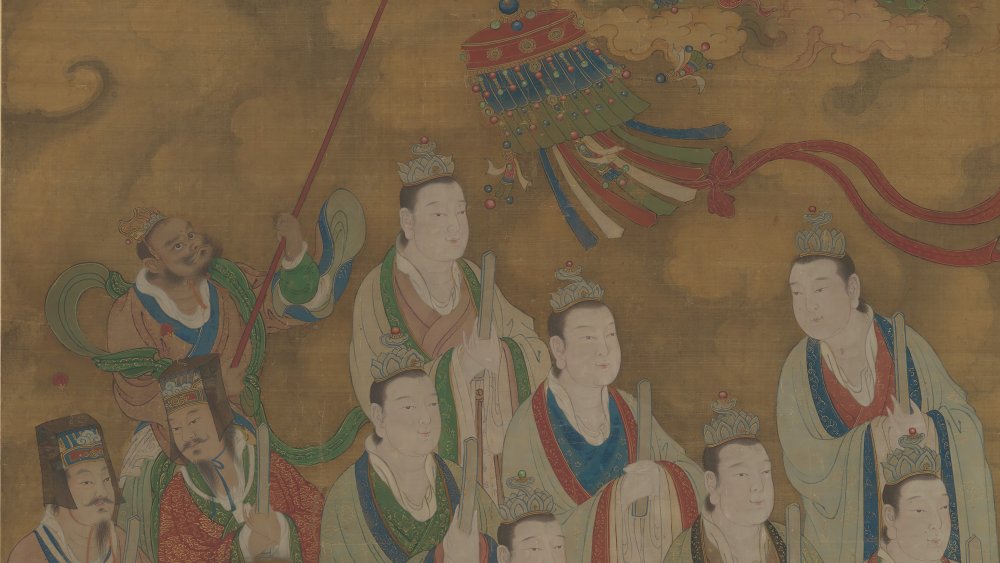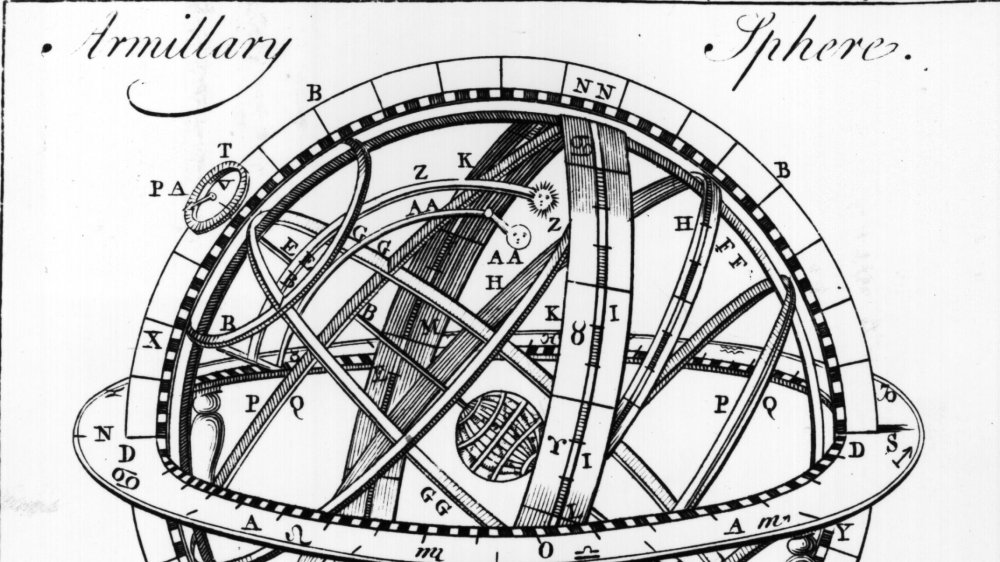This Is What The Ancient Chinese Thought The World Looked Like
Ancient Chinese civilization had a wealth of scientific knowledge and gave the world many discoveries. It was the Chinese who built the first seismograph, compass, gunpowder, and paper, according to Penn State, and it is commonly believed that they possessed advanced knowledge of astronomy. While that is true, it's also worth noting that they — unlike the Greeks — were not exactly into the idea that the Earth is round. Which, yes, it is, despite whatever bizarre facts certain people believe.
Religion was a big factor in this. In Imperial China, people believed that the universe revolved around the emperor. As such, the emperor placed particular importance on the study of the heavens (via New World Encyclopedia). This meant ancient Chinese thinkers assigned meanings to heavenly events, and to their interpretations of the stars. Chinese astronomers then divided the sky into regions and assigned four animals to constellations to better understand the sky. These were the Black Tortoise, to represent the north and winter, the Blue Dragon for the east and spring, the Red Bird for the south and summer, and finally the White Tiger, to mean the west and fall.
But yes, even though the ancient Chinese perceived the heavens as being spherical, they still believed the Earth itself was flat.
They thought the universe was like an egg
Ancient Chinese astronomers believed that a spherical sky surrounded a flat Earth. It wasn't until the arrival of Western astronomers that they started looking at their findings differently, according to a paper from the University of West Bohemia. Before this, astronomers created their own way to describe time differences. Eventually, though, ancient Chinese astronomers came around to the idea that the Earth was also a sphere. From then on, ancient Chinese astronomers invented instruments and star maps to figure out positions of the stars in a spherical fashion. The SAO/NASA Astrophysics Data System notes that the Chinese used tools called armillary spheres, which basically resemble a round sculpture with metal going around it. The device is connected to a telescope, to measure star positions. Meanwhile, the Chinese also created one of the oldest known star charts in human existence.
Overall, the ancient Chinese had a pretty unique take on the world. While they had a strong understanding of star positions, and even mapped the heavens — just as humans do today — it took a while for them to accept that the Earth wasn't flat. Fortunately, they changed their minds, and this led to scientific advancements that are still impressive today.

